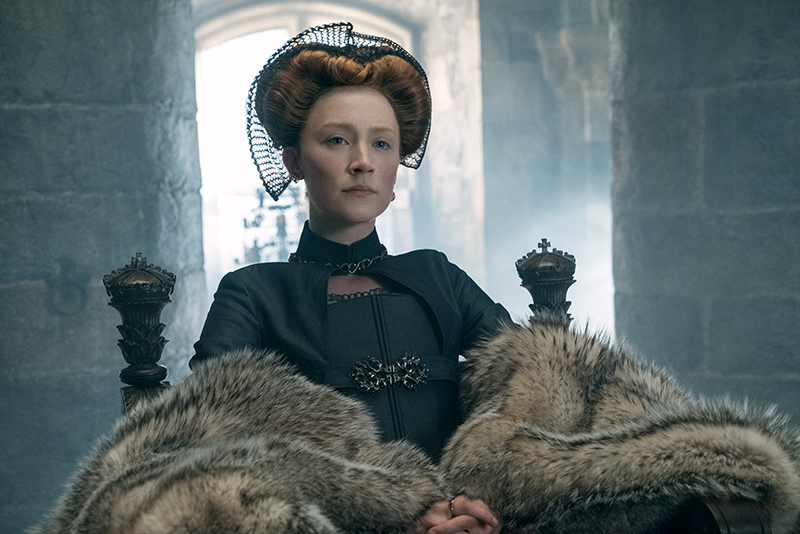Mary Queen of Scots
While the turbulent 16th century life of Mary Queen of Scots was filled with such made-for-TMZ shenanigans, this new biopic admirably shows restraint by dialing down the melodrama in favor of a character-driven examination of a royal power struggle.

Saoirse Ronan stars as Mary Stuart in MARY QUEEN OF SCOTS, a Focus Features release. Credit: Liam Daniel / Focus Features

Centuries before the British tabloids even existed, monarchs were providing plenty of fodder with devious scheming and scandalous behavior.
Yet while the turbulent 16th century life of Mary Queen of Scots was filled with such made-for-TMZ shenanigans, this new biopic admirably shows restraint by dialing down the melodrama in favor of a character-driven examination of a royal power struggle.
The film takes place during a time of considerable turmoil in Great Britain, when the effects of the Reformation have created a religious divide between Catholics and Protestants during the dawn of the Elizabethan era.
Mary Stuart (Saoirse Ronan) is a teenage widow when she assumes the throne in Scotland amid pressure to remarry and to cede her power to her strong-willed cousin Elizabeth (Margot Robbie), the queen of England who also faces criticism because she lacks an heir.
When Mary weds a duke (Jack Lowden), it feels more obligatory than compassionate, especially because her bisexual husband’s tendencies to flirt with other members of Mary’s inner circle. But she’s more concerned with claiming her right to the throne.
Of course, both Elizabeth and Mary had to deal with the gender politics of the time related to their nonconformist lifestyle choices. “Worse than pestilence or famine is a woman with a crown,” intones theologian John Knox (David Tennant), one of Mary’s chief detractors.
The film could have become just another medieval battlefield epic, given the sociopolitical volatility within its true-life setting. However, the intimate screenplay by Beau Willimon (creator of “House of Cards”) skillfully shines the spotlight on its two main characters, empowering each of them with doses of contemporary sexuality feminism without turning heavy-handed.
Ronan and Robbie each find a balance between their characters’ external strengths, which draw them together, and the inner vulnerabilities that keep them apart. The film hints that they’re more alike than different, victimized by their surroundings more than each other.
Although it’s too deliberately paced, Mary Queen of Scots is a visually sumptuous big-screen debut for renowned British stage director Josie Rourke, accentuated by lavish sets and costumes — not to mention the wild makeup and hairstyles.
Like the recent The Favourite, which is set more than 100 years later, this film offers plenty of revisionist speculation and embellishments with regard to its source material. Yet while it sacrifices some context, emotionally it rules.
Rated R, 124 minutes.